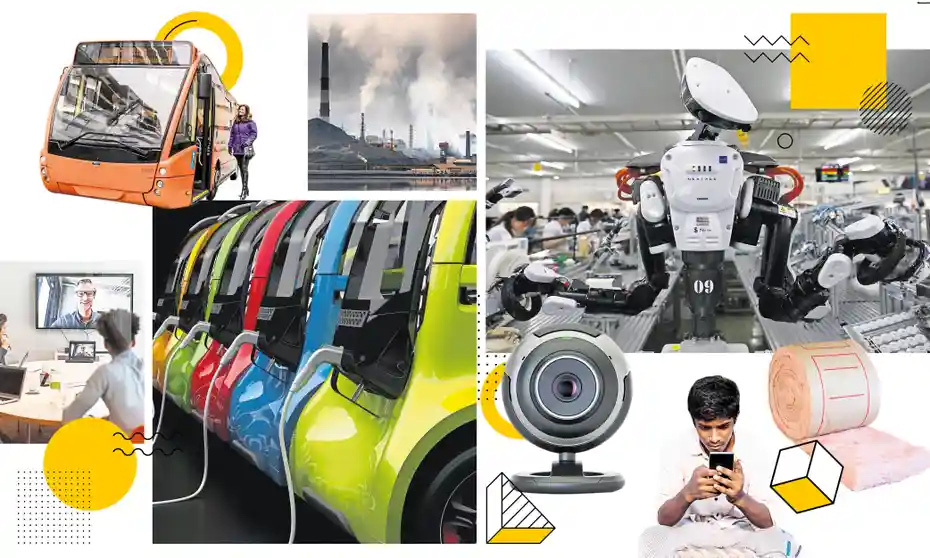The US is at risk of losing its competitive advantage in science and technology
A senior official responsible for promoting technological innovation at the US Department of Defense (DoD) has resigned, he said. The Pentagon needs “structural change” and should behave like SpaceX, Elon Musk’s satellite company that has made waves in rocket launches.
Preston Dunlap, the first person in the US Department of Defense (DoD) to serve as director of technology architecture, told Bloomberg News in an interview: “We’re falling behind the commercial base in places where we’re not. important region, so we have to catch up. It can be seen that the US is at risk of losing its technological advantage to potential rivals,” he said.
Dunlap, who stepped down on April 18 after three years in positions with the US Space Force and US Air Force, is responsible for driving more technology through a $70 billion budget for the US Air Force. research, development and acquisition. He plans to start a space software company focused on satellite connections, data and artificial intelligence. The Pentagon is behind the domestic trade in data, distributed computing, software, AI and cybersecurity, he said.

The US risks losing competitive technology, a Pentagon official said. Photo: @AFP.
“By the time the Government manages to produce something, it is often too old-fashioned,” he said in his nine-page resignation statement, which he considers a “book” to help guide the Pentagon. , which he later made public on LinkedIn. “More work must be done if the DoD is to regain its increasingly thin technological edge.”
Dunlap said the Pentagon needs to stop focusing on internal wars and must “renew the wheel,” and instead also increase cooperation to exploit the private sector, protect the country and compete strongly. hands with China.
Meanwhile, globalization and the rapid development of science and technology by other countries, such as China and India, may make it increasingly difficult for the United States to keep profits because of its economic strategy. its comparative economy. Second, some fear that the foundation of science and technology in the United States – science and engineering (S&E) infrastructure, education, and the workforce cannot maintain a stable balance. The third includes insufficient spending on research and development (R&D), especially on research facilities; problems with education in S&E; and the declining attractiveness of S&E industries to U.S. companies.
To be able to compete with SpaceX and other innovative companies, says Dunlap, the government must bravely carry out early tests that can fail, ranging from hypersonics to artificial intelligence algorithms. He added that consolidating the defense-industrial base from dozens of companies during the Cold War into one is bad for competition and the country. To remedy that, he said the Pentagon should instead contract with multiple companies at once in much more flexible ways.
In a statement, an Air Force spokesman confirmed Dunlap’s resignation, and said the military was grateful for his public service. Ann Stefanek, director of communications operations for the Air Force Department, said Dunlap has “worked tirelessly” for three years.
Dunlap’s new comments come after two other senior technology officials in the US Department of Defense resigned, and called on the Pentagon to urgently modernize its approach to technology.
Earlier this month, David Spirk, outgoing chief data officer for the US Department of Defense, told Bloomberg that the Pentagon needs to speed up its efforts against adversaries that are developing military tools backed by intelligence agencies. cutting-edge technologies such as artificial intelligence, machine learning, and quantum science. Nicolas Chaillan, the first software director for the US Air Force who resigned last year, also told the Financial Times that the US is losing the AI race to China.
Such concerns were also shared by senior Pentagon officials. Michael Brown, director of the Defense Innovation Unit, the Pentagon’s technology center, told the Senate Armed Services Committee this month that the slow pace of invention and adoption of new technology is a ” obvious weakness”, adding that the US risks falling behind China.
Deputy Defense Secretary Kathleen Hicks last week expressed concern about “real resistance” from Congress to adopting technologically risky approaches that could fail.

The United States can strengthen its competitive advantage. Photo: @AFP.
The United States can strengthen its competitive advantage
The United States should not take its leadership in science and technology for granted. Certain policy steps could help strengthen their position:
• Establish an independent, centralized agency to monitor and evaluate US performance in science and technology over the long term. Comprehensive, objective assessments of U.S. activity in the science and technology sector, performed periodically, are critical to ensuring the technological “health” of the United States. The agency can help inform public debate, identify issues, and guide the development of new legislation. At the same time, they can quell exaggerated claims about the collapse or success of American science and technology.
• Strengthen the capacity of the United States to interact with science centers abroad and take advantage of science and technology progress being made elsewhere. Economic strength and overall leadership depend on a nation’s ability to both absorb and use new technologies and create them. As emerging countries become stronger in R&D, US researchers should conduct joint ventures, research collaborations with foreign universities and laboratories to learn about the technology.
at Blogtuan.info – Source: danviet.vn – Read the original article here


